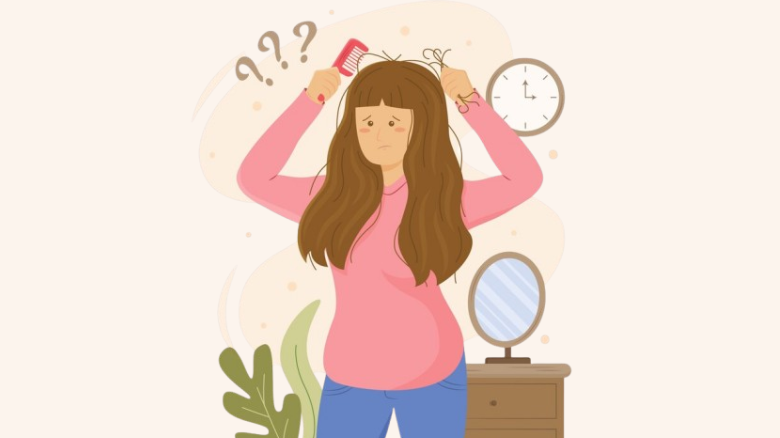
Welcoming a newborn into your life is a joyous occasion, but it also brings its share of challenges. One such challenge that many new mothers face is postpartum hair loss. As the hormonal balance shifts back to its pre-pregnancy state, you might notice more hair on your brush or scattered around your home. This natural process, while common, can be distressing for those who take pride in their luscious locks. But fear not, for understanding the causes and exploring solutions can help you manage and even reduce postpartum hair loss effectively.
Have you ever wondered why your hair seems to fall out in clumps after childbirth, despite doing everything right during your pregnancy?
Key takeaways:
- Learn about the causes of postpartum hair loss and why it occurs
- Discover practical tips for managing and reducing hair loss
- Explore nutritional advice to support hair health
- Understand the role of stress management in controlling hair fall
- Find out when to seek professional help for postpartum hair concerns
How to Manage Postpartum Hair Loss?
After the birth of your child, you might find yourself facing a somewhat unexpected challenge: postpartum hair loss. It can be unsettling to see more hair than usual clogging the shower drain or collecting on your hairbrush. However, by understanding the biological processes at play, you can better manage this temporary phase and focus on nurturing your well-being along with your baby's.
Hair loss after childbirth is primarily linked to hormonal changes. During pregnancy, elevated levels of oestrogen prolong the growth phase of hair, making your mane appear fuller and more vibrant. Once your baby arrives, hormone levels plummet, leading to a shift in your hair's growth cycle. The result? Hair that was in the growth phase enters the shedding phase, leading to noticeable hair loss.
While this is a natural and temporary condition, there are steps you can take to mitigate its effects. Proper hair care becomes crucial, starting with gentle handling. Opt for a wide-toothed comb to detangle wet hair, as it reduces breakage. Try to avoid tight hairstyles that strain the hair shafts, and instead, embrace loose braids or buns. Regularly trimming your hair can also help maintain its health and appearance.
Nutrition plays a pivotal role in maintaining healthy hair. After childbirth, your body requires extra nutrients to recover and support breastfeeding. Incorporate foods rich in iron, zinc, and vitamins A, C, and E into your diet to boost hair health. Leafy greens, nuts, seeds, fish, and eggs are excellent sources of these nutrients. Staying hydrated is equally important, so ensure you drink plenty of water throughout the day.
Managing stress is another key factor in controlling postpartum hair loss. Stress can exacerbate hair shedding, so it's vital to find ways to relax and unwind. Gentle exercises such as yoga or walking can improve circulation and promote hair growth. Additionally, mindfulness practices like meditation can help you maintain a calm and positive mindset, which is beneficial for both you and your newborn.
If your hair loss seems excessive or continues beyond the usual postpartum period, it might be time to consult a healthcare professional. They can rule out underlying conditions, such as thyroid imbalances or nutritional deficiencies, that may contribute to the issue. Remember, you're not alone in this journey, and seeking support can help you regain confidence in your appearance.
Conclusion:
While postpartum hair loss is a common experience, it doesn't have to be a source of anxiety. By understanding its causes and adopting practical strategies, you can manage the condition effectively. Embrace this phase as a part of your postpartum journey, and focus on nurturing both yourself and your little one.
Struggling with postpartum hair loss? Harsha Hospitals offers expert care and proven treatments to restore your confidence. Regain healthy, strong hair with our personalized solutions today!"


